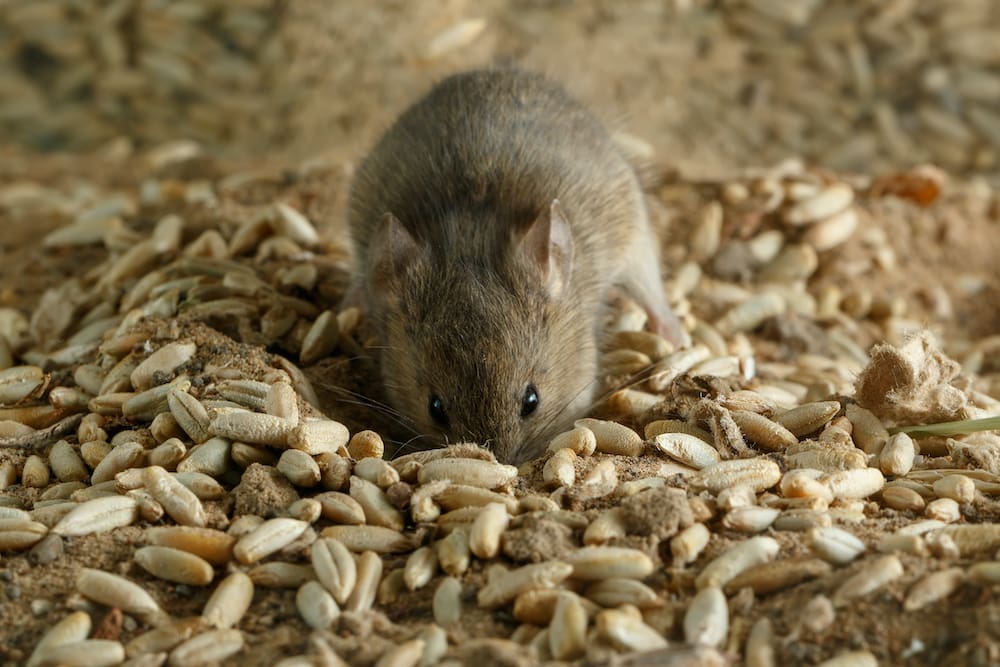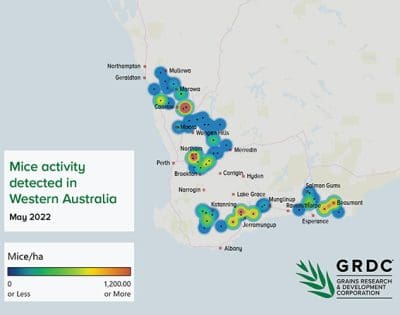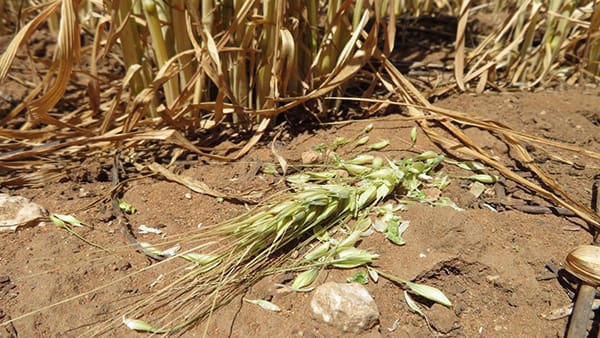
WA growers are being urged to be on the lookout for mice damage in their paddocks.
GROWERS across the Western Australian grainbelt are encouraged to actively and frequently monitor for mouse activity following the recent detection of significant mouse damage to crops in Merredin and surrounds.
At a June 27 field walk arranged by Merredin and Districts Farm Improvement Group (MADFIG) and Nutrien Ag Solutions Merredin, Grains Research and Development Corporation (GRDC) representatives spoke with growers who reported holes the size of utes in crops due to mouse damage.
Some growers in this region had not actively monitored their crops before or during seeding, and were unaware of the level of risk from mouse activity.
Increased mouse activity in WA was anticipated this year due to the volume of grain left behind in paddocks after a record-breaking 2021-22 harvest.
With the Bureau of Meteorology (BOM) website predicting warmer, drier conditions for WA in July, it could be a perfect storm for further extensive mouse damage in the region, as milder weather contributes to more active mouse breeding.
CSIRO mouse expert and researcher officer Steve Henry said mouse numbers can build rapidly under the right conditions, leading to crop damage throughout the growing season.
“Mice can do damage at all phases of the crop, so if they’re taking whole plants out when the crop’s being sown, there is a related loss of yield when the crop is harvested,” Mr Henry said.
“The key message now is to be vigilant in the late winter/early spring and be prepared to bait if you see signs of mouse activity.”
He said early detection and integrated management across the farm was crucial for reducing the risk of mouse impacts because once mouse numbers are very high, it is very difficult to reduce damage, and control strategies can be costly.
GRDC has invested in additional surveillance and extension activities to alert WA growers and advisers of the presence of mouse outbreaks across the state throughout the 2022 season and extend information on effective management tactics.
May 2022 data from the investment shows mouse activity hotspots across all five port zones, with particularly high levels of activity around Coorow, Northam, Jerramungup and Beaumont.

Heat map of mice activity detected in Western Australia, May 2022. Photo: GRDC
GRDC Crop Protection manager – west Georgia Megirian said that growers in these regions need to be especially vigilant over coming months to avoid mouse infestations and widespread damage to grain crops.
“Adding more surveillance sites across the state, alongside the surveillance conducted by the Great Northern Rural Services in the Geraldton Port Zone and Ravensthorpe Agricultural Initiative Network (RAIN) in the Ravensthorpe area, has given us an indication of mouse populations in the WA grainbelt,” Ms Megirian said.
“This should provide growers and industry information on potential risk of crop damage in their areas from mice at sowing and throughout the growing season.
“However, it is still vital that growers monitor their paddocks to determine if they have a mouse issue and determine whether baiting may be required.”
Accurate monitoring is key
Accurate monitoring and early spring management are key to reducing the risk of mouse damage in developing winter crops.
Mr Henry said growers are encouraged to complete regular checks for signs of active burrows or crop damage.
“In cereals this may be chewing at the node or stem, which causes the head to fall over or from a distance can look like frost damage.
“In canola and legume crops, growers should be inspecting flowers and pods for damage.
“At the first sign of crop damage, growers need to be prepared to bait, preferably with 50g/kg zinc phosphide spread at 1kg/ha.
“The best chance of success is to bait before milky stage or before pod development.
“Mice may not eat baits if there are lots of high-quality seeds or pods available.”

Mouse damage to a wheat crop. Photo: Peter Brown, CSIRO
Mr Henry says controlling mouse populations during late winter and early spring would effectively reduce the number of mice when breeding started in September.
There are simple in-paddock monitoring techniques such as mouse chew cards that can be used when conditions indicate there is a risk of increasing mouse numbers.
Mouse chew cards are set out overnight and the proportion of the card that has been chewed by mice is recorded when it is collected the following day.
This method is most reliable when alternative food is scarce and particularly handy in bulky crops where active mouse holes may be difficult to find under the canopy.
When considering baiting options, currently zinc phosphide (ZnP) is the only rodenticide registered for in-crop use.
Zinc phosphide baits can be laid through aerial or ground application. Baiting at the time of sowing is most effective for protecting recently sown crops but baiting is also effective for controlling mouse damage during vegetative growth, flowering and seedset.
For more information, to report mouse activity and for baiting tips go to the MouseAlert website.
Source: GRDC

HAVE YOUR SAY